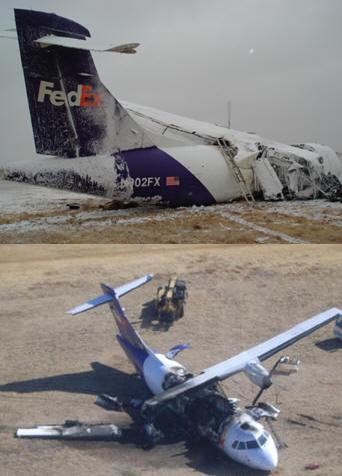|
|||||||||||||||||
|
|
|
|||
|
NTSB’s Airline Accident Report Shows Need For Rest Rules For All Airline
Pilots By Eddy Metcalf |
||||
 |
April 29, 2011 - Captain Lee Moak, president of the Air
Line Pilots Association, Int’l (ALPA), issued the
following statement in response to the National
Transportation Safety Board meeting this week regarding
the 2009 Empire Airlines Flight 8284 accident at
Lubbock, Texas. “The Air Line Pilots Association, Int’l, commends the National Transportation Safety Board for its work to enhance aviation safety with a thorough review of the Empire Airlines accident. "In
its meeting, the Board discussed flight crew fatigue,
flight operations in icing conditions, and the need to
enhance crew resource management training for all
airline pilots. Unfortunately, these safety concerns,
which ALPA has pressed to address for decades, persist
in our industry today, even in this period of remarkably
safe airline operations. “The Board reported that the flight, conducted under 14 CFR 121 supplemental rules, was operated in the very early hours of the morning, and the crew experienced a level of fatigue that likely contributed to the accident. "For decades, ALPA has called for ‘One Level of Safety’ and sought standardized, science-based flight- and duty-time limits and minimum rest requirements that apply to all airline operations, regardless of whether the pilots fly cargo, military equipment and troops, or commercial passengers. The Board’s discussion pointed to the particular threat posed by operations during times of ‘circadian low’—overnight flights when pilots are especially vulnerable to fatigue. |
|||
|
“In addition, the Board drew attention to the icing conditions
in which the Empire Airlines flight was operating, which
included ‘supercooled large droplets’ that can significantly
degrade aircraft performance. In the nearly 20 years since the
tragic accident near Roselawn, Indiana, that was linked to this
type of icing, the weather phenomenon has been studied
extensively, but our industry has only recently begun taking
positive steps to account for its effect on aircraft
performance. |
||||
|
“Much more needs to be done to address the hazards posed by in-flight
icing conditions, and the NTSB echoed many of ALPA’s long-standing
priorities such as avoiding flight in supercooled-large-droplet-icing
conditions unless manufacturers’ testing has concluded it can be done
safely. Other ALPA priorities include enhanced training for pilots,
dispatchers, and flight followers, and greater fidelity in flight
simulator replication of icing conditions.
“We owe it to all who were affected by this accident to act on these
opportunities to advance safety. ALPA particularly commends the
recognition by the Board that all airlines, regardless of the size of
the aircraft, the size of the airline, or the nature of the payload,
must be operated to a single high safety standard.” On January 27, 2009, N902FX, an Aerospatiale Alenia ATR-42-320, operating as Empire Airlines flight 8284, sustained substantial damage when it landed short of the runway threshold while executing the Instrument Landing System (ILS) RWY 17R approach at Lubbock Preston Smith International Airport (LBB), Lubbock, Texas. The airplane was registered to Federal Express Corporation, Memphis, Tennessee, and operated by Empire Airlines, Hayden, Idaho.
The captain was seriously injured and the co-pilot sustained minor
injuries. An instrument flight rules flight plan was filed for the
flight that departed Fort Worth Alliance Airport (AFW), Fort Worth,
Texas, approximately 0319. Night instrument meteorological conditions
prevailed for the supplemental cargo flight operated under 14 Code of
Federal Regulations Part 121.
A preliminary review of air traffic control communications revealed that
the captain contacted the Lubbock Air Traffic Control Tower (ATCT) at
0422, and reported that they were descending from an altitude of 10,000
feet down to 8,000 feet mean sea level (msl). A controller acknowledged
the transmission and then provided the airport's current weather
information and a runway breaking-action advisory. In addition, he
provided vectors for the ILS 17R approach.
At 0430, the controller instructed the airplane to descend and maintain
an altitude of 5,000 feet msl. At 0432, the controller informed the
flight crew that the wind had shifted 180 degrees from the north to the
south between 5,000 and 6,000 feet msl. The captain responded and added
that he also noted a drop in the outside air temperature of 8 degrees
and concurred with the controller's observation regarding the wind
shift. The controller cleared the airplane for the ILS approach at 0433
and instructed the flight crew to contact Lubbock Control Tower. The
captain acknowledged.
At 0434, the captain contacted the control tower and a controller
cleared the airplane to land on runway 17R. The captain acknowledged the
landing clearance and there were no further communications.
Approximately three minutes later an airport maintenance employee
contacted the tower and asked "what is that fire there at the end of the
runway?" A controller responded, "it's an airplane." The controller had
witnessed the accident and had activated the alarm for the airport
rescue and fire fighting equipment to respond. An on-scene examination of the wreckage revealed that the airplane landed short of the runway threshold and collided with the approach lighting system before it skidded off the right side of the runway into the grass. The airplane came to rest on a westerly heading perpendicular to the runway. A post-impact fire consumed a large portion of the fuselage and the right wing. |
|
|
| ©AvStop
Online Magazine
Contact
Us
Return To News
|
|

